Stretch Hiking pants
by Johannes and Birgit
Different fabrics require different sewing patterns, especially when the fabric contains stretch. This new pattern version of the hiking pants is made for the bi-elastic Stretch-Polyamide with Coolmax ®. The butt, knees and hem is reinforced with a 4-way stretch Kevlar® blend. These two fabrics combined give these pants a wonderful modern look and to the same time provide you with all the functions you look for during a trip.
The stretch hiking pants have a slim modern look and still fit over a base layer. They allow free movement and are perfect for all kinds of cooler outdoor activity days. The additional length covers your ankles when you lift your legs to prevent your trousers from sliding above your boots, and small debris or stones getting into your shoes.
The side seam is placed further to the back, which brings the pockets more to the side.
The Fabric
Stretch-Polyamide with Coolmax®
The bi-elastic 4-way Polyamide (Nylon) with Coolmax® fabric is hard-wearing from the outside and very soft and breathable from the inside. Perfect for cooler days. The outer fabric side is impregnated so it is water-and abrasion- resistant. The inner fabric side has a layer of Coolmax®, which is moisture wicking and soft to the skin. The lengthwise stretch allows a slim cut fit and still free movement.
Kevlar®/polyamide blend
The Kevlar®/polyamide-blend is tear-,heat- and abrasion-resistant and perfect for reinforcements. It has a 4-way stretch and is very durable. The outer fabric side is flat while the inner farbic side shows the strong Kevlar® loops.
Butt-Knee-Hem Reinforcements
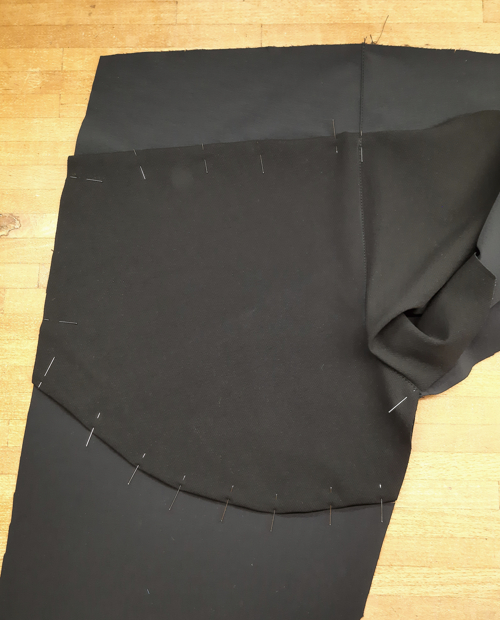
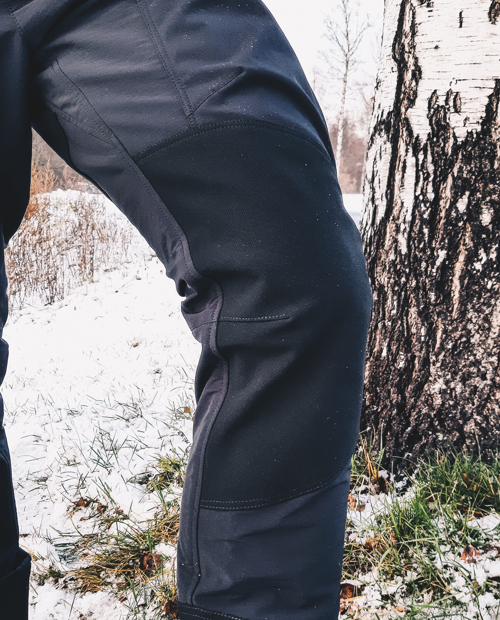
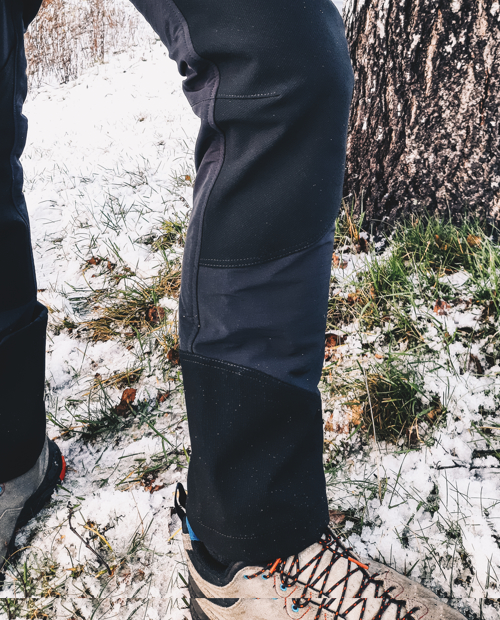
The reinforcements are placed on top of the main fabric. This gives you better protection in ruff terrain. They just cover the area that is needed. Less double fabric means better overall breathability of the pants.
Butt
The bottom seam is below your butt for good overall bottom coverage. The upper seam is placed below the waistband. Which allows a much better breathability in the lower back area and slower moisture building.
Knee
The cut is higher on the inseam and lower on the side seam to give protection where you need it when for example climbing.
Hem
The hem reinforcement covers the full hem. This has multiple advantages. The inseams of the pants are covered, to give you good high protection. It is lower on the side-seam as you need less protection there. The rest of the hem has a good overall protection against sharp edges and normal wear and tear during a trip.
The Pockets
This variation of the pants has three different kinds of pockets. A pair of spacious hand pockets and two thigh pockets. One of them is a zipper pocket and the other one is a good sized cargo pocket covered by a flap.
The Hand Pockets
The hand pocket opening is slightly rounded and yet easy to sew. The opening is from the top, as this prevents items from sliding out easily. All kinds of items can fit in the spacious pocket. Use a thin Supplex-Nylon, a polyester taffeta or any other suitable thin fabric for the lining.
The Thigh Pockets
The thigh pockets are placed on the front of the thigh. They are spacious to keep items easy at hand during the trip, for example a map fits easily. There are several advantages to having the pockets on the front and not on the side of your pants. One of them is that you do not easily get stuck on branches. Anotherone is that the weight of the items in the pocket do not pull the side of your pants down so fast and the third one is, they are easier to sew, as the backside is closed with the side seam.
The Thigh Zipper Pocket
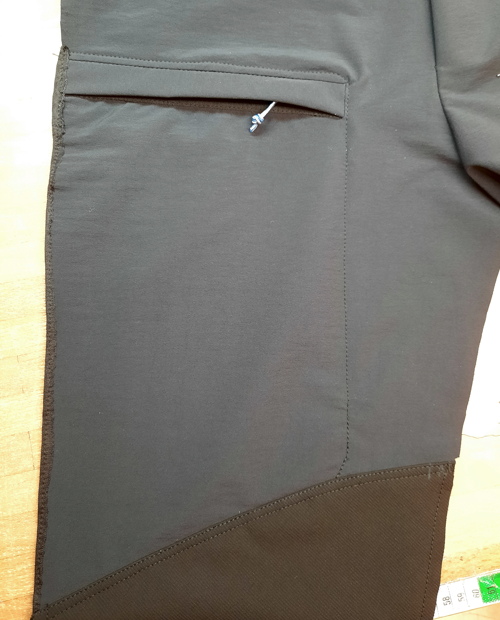
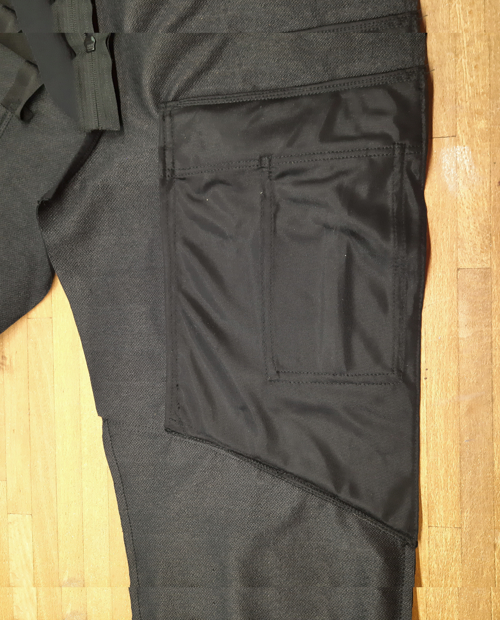
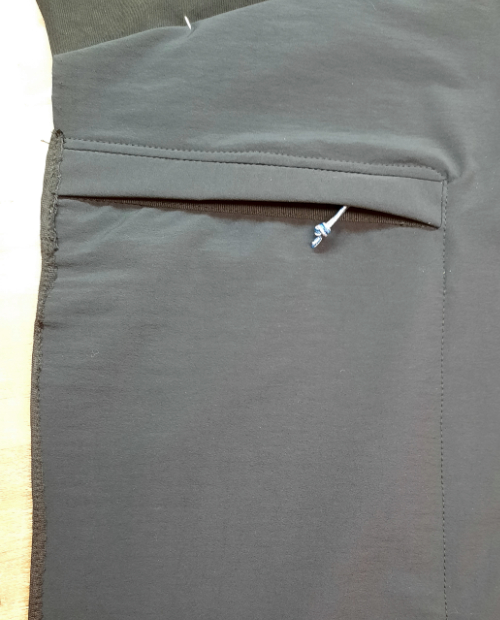
The zipper pocket has a modern practical look. A slim welt covers the zipper against wind and water. A zipper pocket is inserted into the fabric. Which means you only have the outer fabric and a lining fabric behind the main fabric on the inside. The lining fabric is topstitched to the outer fabric to close the pocket. Less layered fabric means better overall breathability.
An inserted pocket is either placed between lots of seams or you need to cut into the fabric. Cutting into the fabric is always connected with fear, but this particular zipper pocket uses an easier way with good illustrated sewing instructions.
These pants even have an inner sleeve pocket for a phone.
The Inside Sleeve Pocket
The inside sleeve pocket is easy to make. Just cut a rectangular piece of fabric, big enough for example for your phone and make an elastic tunnel at the top edge. Use a 1 cm (0.4'') wide grosgrain ribbon to cover the open fabric edges. This keeps the sleeve pocket edges nice and thin.
This simple pocket can be placed inside the cargo- and hand pocket or any other pocket.
The Cargo Pocket
The cargo pocket also has a good size. A flap covers the opening. Hook & loop (velcro) keeps the pocket closed and allows easy access at the same time.
This type of pocket is placed on top of the main fabric. The cargo bag is designed with a dart in the front and a pleat on the side. The main advantage is seen when walking through dense terrain, as you are not getting hooked onto branches because the opening of the pleat is facing backwards and there is no pleat at the bottom. This pocket is easy to sew and can be placed where you like it.
Cargo pocket sewing instructions are done and this pocket is now available as new extra for all pants.
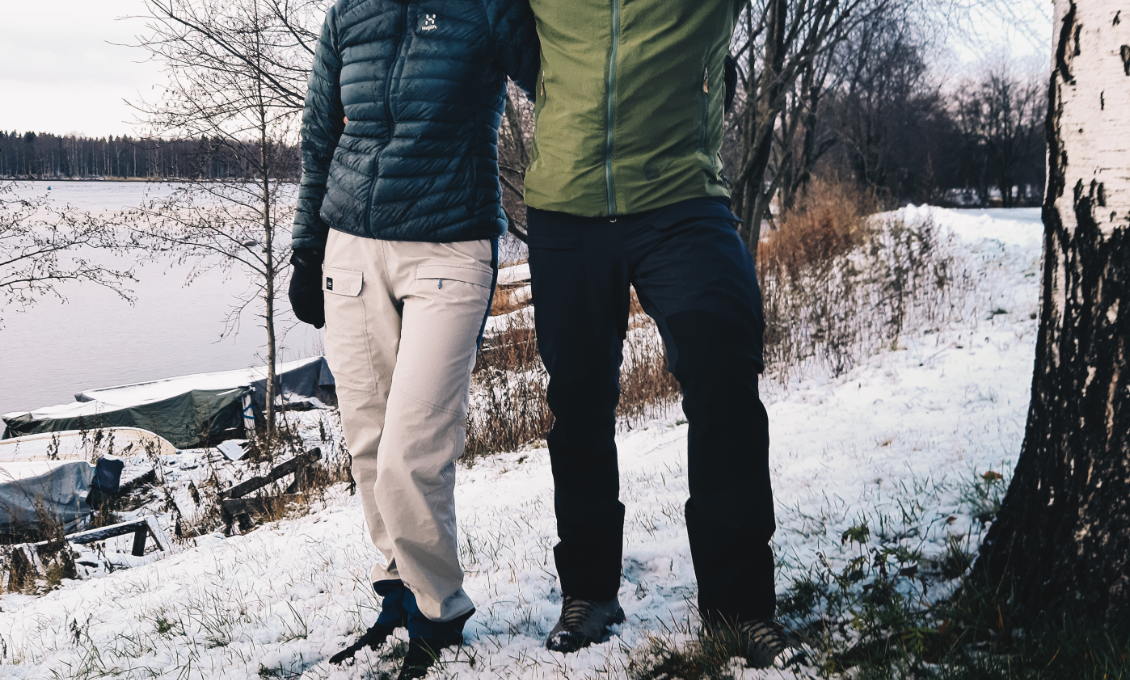
Related Story
Waterproof Pants
by Annamari and Birgit